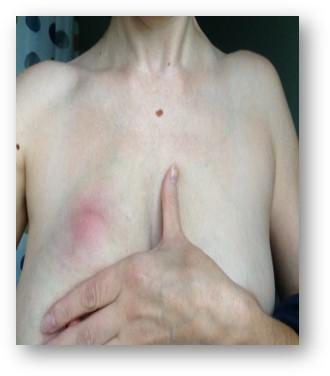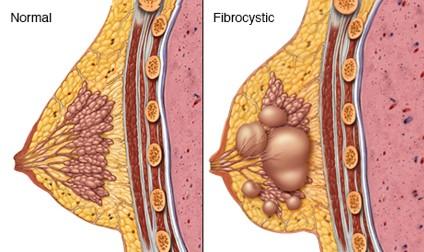Benign breast disease is categorized in two different ways:
- Abscess
- Fibrocystic disease
Abscess
- In severe infections, either from plugged ducts/engorgement or Mastitis, an abscess may develop.
- Abscesses need to be drained, either as an office procedure or with surgery. Women with abscesses may be told to temporarily stop breast-feeding.
Image

Fibrocystic Disease
- Fibrocystic changes, also called fibrocystic breast disease, is associated with cyclic breast pain
- Accurate diagnosis made by microscopic evaluation
- No increased risk of developing cancer with fibrocystic disease
Image

http://www.mayoclinic.org/diseases-conditions/fibrocystic-breasts/home/ovc-20194898
Reference
Miltenburg DM, et al., 2008; Katz V, et al., 2007; Chase C, et al., 2011
Fibrocystic Disease Symptoms
- May cause a dull or aching pain
- Often reported in women ages 30-40 years of age
- Women reported tenderness, lumps, breast feeling solid, and a change in size and density of their breasts as their menstrual cycle develops
Reference
Chase C, et al., 2011

